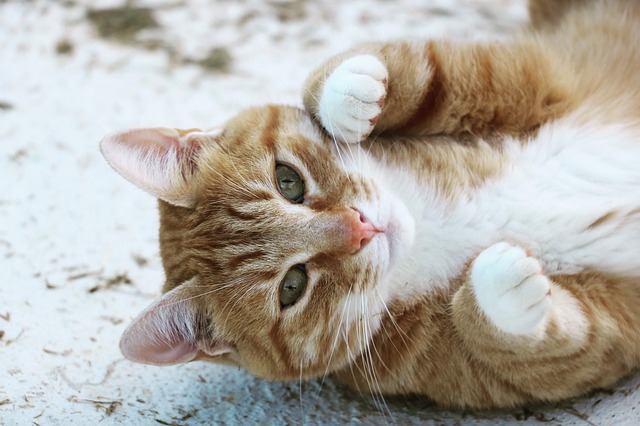The Importance of Microchipping Your Cat
The Importance of Microchipping Your Cat
As a responsible pet owner, ensuring the safety and well-being of your feline companion is paramount. One critical step in this process is microchipping your cat. Microchipping is a simple, effective method of ensuring that your pet can be easily identified and returned to you if they ever get lost. This article delves into the reasons why microchipping is essential for your cat's safety and offers insights into the process.
What is Microchipping?
Microchipping involves implanting a small electronic chip, about the size of a grain of rice, under your cat's skin, typically between the shoulder blades. This chip contains a unique identification number that is linked to your contact information in a pet recovery database. Unlike collars and tags, which can fall off or be removed, a microchip is a permanent form of identification.
Why Microchipping is Important
Increased Chances of Reunification:
Cats are curious creatures by nature and may sometimes wander far from home. According to the American Veterinary Medical Association, cats with microchips are significantly more likely to be reunited with their owners. Without a microchip, only about 2% of lost cats are returned home, compared to over 38% when they are microchipped.
Proof of Ownership:
In cases where ownership of a cat is disputed, a microchip provides definitive proof. This is particularly useful in situations where a lost cat has been adopted by another family or is found by animal control.
Emergency Situations:
Natural disasters, such as hurricanes, floods, or wildfires, can result in pets being displaced. In these chaotic scenarios, a microchipped cat has a far better chance of being identified and returned to its rightful owner once the situation stabilizes.
Mandatory in Some Areas:
In some regions, microchipping pets is a legal requirement. Ensuring your cat is microchipped can help you stay compliant with local regulations and avoid potential fines.
The Microchipping Process
Microchipping your cat is a quick and relatively painless procedure. It is often done during a routine veterinary visit and does not require anesthesia. The chip is inserted using a needle, similar to those used for vaccinations. Most cats experience minimal discomfort, akin to getting a standard shot.
Once the chip is implanted, it is crucial to register it with a national pet recovery database and keep your contact information updated. This ensures that if your cat is found, you can be contacted promptly.
Common Misconceptions
Despite its benefits, some pet owners hesitate to microchip their cats due to common misconceptions:
Health Concerns: Microchips are made from biocompatible materials, meaning they are safe for animals. Complications are extremely rare.
Privacy Issues: The microchip does not contain GPS technology and cannot track your cat's movements. It only stores a unique identification number that links to your contact information in a database.
Effectiveness: Some believe that indoor cats do not need to be microchipped. However, even indoor cats can accidentally escape, making microchipping a prudent precaution.
Enhancing Your Cat's Safety
While microchipping is an essential step in protecting your cat, it should be part of a broader strategy to ensure their safety:
Collars and Tags: Complement the microchip with a collar and ID tag. This provides immediate identification for anyone who finds your cat.
Regular Check-Ups: Periodically have your veterinarian check that the microchip is functioning correctly and remains in place.
Secure Environment: Ensure your home and garden are secure to prevent your cat from wandering off.
Microchipping your cat is a small investment that can pay off enormously in terms of peace of mind and the likelihood of being reunited with your pet if they go missing. It is a simple, safe, and effective method to safeguard your feline friend's future. By microchipping your cat and maintaining updated registration details, you provide them with a critical safety net that significantly enhances their chances of finding their way back to you.
How does microchipping improve the chances of reuniting with a lost cat?
Answer: Microchipping greatly enhances the chances of reuniting with a lost cat due to its reliable identification system. When a lost cat is found and taken to a veterinary clinic or animal shelter, a scanner can read the unique identification number on the microchip. This number is linked to the owner's contact information in a pet recovery database. Statistics show that cats with microchips are over 38% more likely to be returned to their owners compared to only 2% for non-microchipped cats. The microchip provides a permanent and tamper-proof method of identifying the pet, making it easier for shelters and veterinarians to contact the rightful owner.
What are the common misconceptions about microchipping, and why are they incorrect?
Answer: Common misconceptions about microchipping include concerns about health risks, privacy issues, and its necessity for indoor cats.
Health Concerns: Some pet owners worry that the microchip could cause health problems. However, microchips are made from biocompatible materials, and complications are extremely rare. The procedure is safe and minimally invasive.
Privacy Issues: Another misconception is that microchips contain GPS technology that can track the cat's movements. In reality, microchips do not have tracking capabilities. They only store a unique identification number that is linked to the owner’s contact details in a database.
Effectiveness for Indoor Cats: Many believe that indoor cats do not need to be microchipped. However, even indoor cats can escape or get lost in various scenarios, such as during a move or when a door or window is accidentally left open. Microchipping provides a safety net in such cases.
What steps should an owner take after microchipping their cat to ensure the microchip is effective?
After microchipping their cat, an owner should follow several steps to ensure the microchip is effective:
Registration: Immediately register the microchip with a national pet recovery database. This involves linking the microchip's unique identification number to the owner's contact information.
Updating Information: Keep the contact information in the database current. Whenever there is a change in address, phone number, or any other relevant details, update the database to ensure you can be reached if your cat is found.
Regular Check-Ups: During routine veterinary visits, ask the vet to scan the microchip to ensure it is still functioning correctly and is in place. This ensures that the microchip remains a reliable form of identification.
-

1











Leave a comment